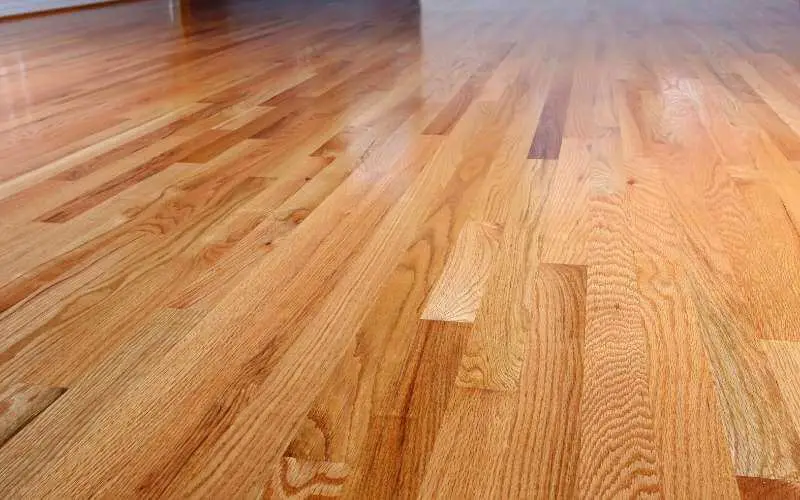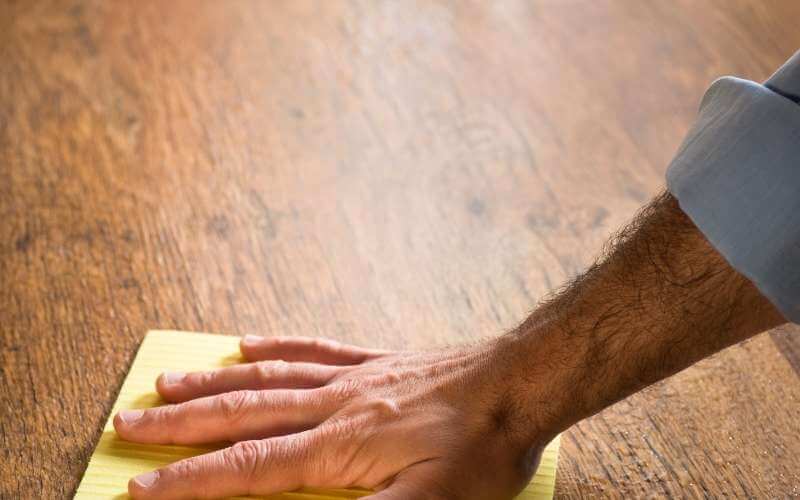If a construction project is ongoing in your home, it is important to know how to protect your newly finished hardwood floors from damage.
Construction materials like paint, cement, and even dust and dirt can damage hardwood floors. So, how do yo protect newly finished hardwood floors during construction?
How to protect newly finished hardwood floors during construction involves taking measures like using temporary floor coverings, creating walking routes, using painter’s tape for non-adhesive floor coverings and sealing the rest of the room.
Embedded in this article are some helpful tips to protect your floor from damage. These tips will save you money instead of replacing hardwood floors after a construction project.
Related: When Can I Put Furniture On Refinished Hardwood Floors?
Why you Should Protect your Hardwood Floors During Construction
Table of Contents
- 1 Why you Should Protect your Hardwood Floors During Construction
- 2 How to Protect Newly Finished Hardwood Floors During Construction
- 3 Conclusion
Before we delve into how to protect newly finished hardwood floors, let’s look at the importance of protecting your flooring during construction.
- To maintain their beautiful appearance and prevent permanent damage
- To avoid permanent stains from paints
- Dirt and dust from outdoor can also damage your hardwood floors
- Heavy furniture or cleaning equipment can scratch your floors while carrying them
- Ways to Protect Newly Finished Hardwood During Construction
How to Protect Newly Finished Hardwood Floors During Construction
You should consider some of the below-outlined tips to protect your floor during renovations.
1. Use Temporary Floor Coverings
Using a temporary floor covering is one of the ways to protect newly finished hardwood floors during construction. It is safe, efficient, and easy to install.
Temporary floor coverings provide a clear walkway for construction workers. However, you should choose a covering that’s best for your flooring material and type of construction project.
Types of Floor Coverings
You can choose from any of the following coverings that are mostly used to protect hardwood floors from damage:
Floor Cardboard
Using floor cardboard can prevent damage to your hardwood floors during heavy-duty construction projects. Some of these products contain adhesive to stick them to your flooring, but you could use painter’s tape to hold them.
Hardboard
A hardboard is a thick wooden board. It is durable and easy to install, just like the floor cardboard.
Rosin Paper
If you want enhanced protection for your floor’s finish, you should try stack rosin paper and hardboard. However, you should remember that rosin paper can stain your floors. Therefore, we advise you to use it with a sheet of hardboard.
Adhesive Floor Protection Film
This is another high-quality floor covering suitable for your hardwood floor. It is generally safe to be used directly on your hardwood floors and most flat surfaces. Make sure you read the manual to ensure it can be used on your flooring.
2. Use a Painter’s Tape for Non-adhesive Floor Coverings
A painter’s tape can be used together with a non-adhesive floor covering to keep it from sliding against the surface.
With this adhesive material, your hardwood floors are protected from paint spills and pressure from fallen heavy equipment.
Before using painter’s tape on your hardwood floors, take note of the following:
- Make sure your floors are clean. Dust the surface to avoid dirt from accumulating.
- Ensure you’re using a medium-adhesion tape. The adhesive product should be medium-strength because the very strong adhesive can damage your flooring, nevertheless, the tape should be effective enough to stick to your floors.
- Even though painter’s tape is generally safe on flat surfaces, don’t use it directly on a newly finished hardwood floor. You may stick it to the baseboard instead.
Read: Do Rug Pads Damage Hardwood Floors?
3. Create Walking Routes
Create a mini route for the construction workers to bring their tools and materials in and out of the room.
They should be aware of areas where they are prohibited from entering. This will curtail the spread of dirt and dust in the home.
Steps to Create Safe Walking Routes Inside Your Home
Here are some steps you can follow to create safe walking routes inside your home:
Map Out an Area
Before the construction begins, it is important to think about what parts of the house the construction workers will pass through.
Use protective film or another temporary covering to map out those areas. Remove items like furniture or other materials that may restrict movement.
Protect the Route
If the construction workers are likely to track mud into the house, you should take precautionary measures by spreading a thick layer of wood chips by your door. This will reduce the dirt on their shoes.
A sticky mat can also do the job perfectly. Install one at each work-area entrance to remove dirt from their shoes before entering the house.
Provide Shoe Covers for the Workers
You may also need to provide shoe covers for the construction workers. No doubt, adhesive film, and sticky mats can protect your flooring from dirt from outside. However, there is some stubborn dirt that may stick to the shoe.
Instead of asking the workers to remove their shoes before entering the house, you can provide shoe covers they can wear inside the house.
4. Clean the Worksite and Leave It Ventilated
A temporary floor covering isn’t a full guarantee that dirt won’t stain your flooring. That is why it is important to clean the worksite at the end of every workday.
You can use a mop and shop vacuums to clean your flooring to avoid the spread of dirt or residues from construction projects.
If you have paint spills on your floor, ensure you clean it immediately to avoid permanent stains.
Also, ensure the room is well ventilated. This will protect your hardwood floors and improve the air quality in your room.
Use a fan or keep your windows open, especially when construction workers use chemicals with a harsh smell.
Moreso, If your room is not well ventilated during construction, chemicals, dust, or dirt in the air can settle onto the flooring and damage them. Installing a window fan can help curb this.
Generally, ensure your room is properly cleaned after each workday.
5. Seal the Rest of the Room
Another way to protect newly finished hardwood floors during construction is by covering some important areas of the room, such as:
- Doorways
- Air ducts
- Baseboard molding
- Window treatments
Read: How to Fix Dog Scratches on Hardwood Floors
Conclusion
If you want your newly finished hardwood floors to last long, it is important to protect them, especially during construction and renovation.
The best ways to do this are restricting the amount of dirt and dust coming from outside the house and cleaning the floor immediately after each workday.
We’ve come to the end of how to protect newly finished hardwood floors during construction, and we believe we’ve done a great job outlining how.
We also believe this article is both helpful and informative. Kindly share it across your social media pages if you feel the same way.

